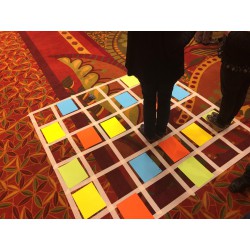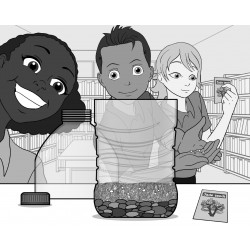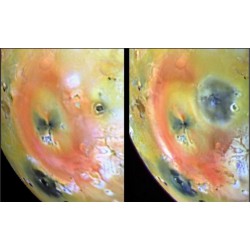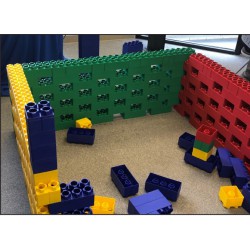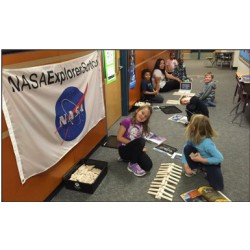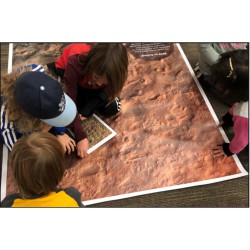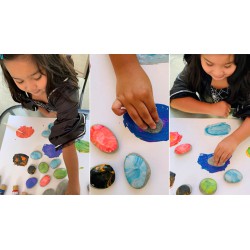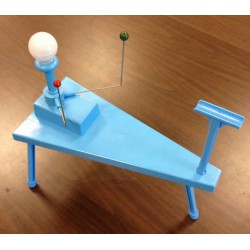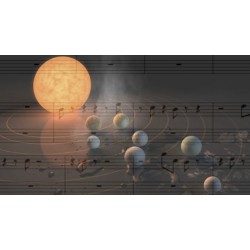Sort
New items
-

Speculative Stories
In this flexible activity patrons imagine future uses of AI tools, and...
-

Ethiquest
In this short activity patrons consider the ethical dilemmas posed by...
-

Data Bites
Patrons create a paper supervised learning machine, and use it to sort...
The Search for Habitable Worlds There are 24 items.
What makes a planet habitable? This collection explores this question with activities curated to engage patrons in the different tools scientists use to discover if a planet is habitable.
-
Rover Races
Participants work in teams to model the process for communicating with a rover on Mars, to build programming skills, and understand the effects of time-delay. 0
Check It Out
-
Searching for Life
Participants learn about the characteristics of life and conduct an experiment, searching for life in different soil samples. 0
Check It Out
How-to Video Implementation Guide Provides extensive background information, facilitation outline, materials shopping list, extended supporting media suggestions, correlations to national standards, and more. -
Life on Mars? Nurturing Life
A garden can be a reminder of life’s needs and our connection to the planet we call home. Children consider the requirements of living things and compare the surface conditions on Mars to those found on Earth as they plant gardens. Gardening tips and options for indoors and outdoors are provided. 0
Check It Out
How-to Video Implementation Guide Provides extensive background information, facilitation outline, materials shopping list, extended supporting media suggestions, correlations to national standards, and more. Teacher's Guide Provides classroom connections, key concepts, connections to science standards, and additional resources. -
Anomaly Adventures: Through the Eyes of a Computer
Patrons compare images to find the differences to learn about the process of "anomaly detection," and how scientists use this process to explore the Universe and study our own planet 0
Check It Out
-
Space Forts: Exploring Computer Processing Systems
Patrons learn about parallel and serial processing computer systems by racing the clock to build a fort with stackable blocks 0
Check It Out
-
Rover Designs: Coding with Art
Participants explore computer programming by "coding" one another to build space designs using uniform blocks, such as Keva Planks 0
Check It Out
-
Curiosity Rover's Adventure on Mars
Patrons code a programmable toy vehicle, such as the Code & Go Robot Mouse, to travel to different waypoints on a 4' x 5' vinyl map of Mars, while learning about NASA's Curiosity Rover and its mission to Mars. 0
Check It Out
-
Pasión por los Píxeles
¿Sabías que cuando miras la foto de un planeta en el espacio, realmente estás mirando un conjunto de números? Los satélites de teledetección toman fotografías y recogen datos que son transmitidos a la tierra como señales digitales o conjuntos de números. A continuación, un programa de computación os convierte a imágenes en colores. 0
Check It Out
-
Make Your Own Exoplanets
In this STEAM activity, patrons make their own exoplanets using rocks, acrylic paint, popsicle sticks, and craft paper. 0
Check It Out
-
Kepler Mission: Table-top Models
Explore a series of table-top models, some ready-made and others you can build, demonstrating the principle of how Kepler will find extrasolar planets by the transit method. 0
Check It Out
-
Make Your Own TRAPPIST-1 Music
The Spitzer Space Telescope revealed that there's a pattern to the way the planets move around the TRAPPIST-1 star. When this pattern is set to music, they can portray a beautiful melody! Try taking the transit notes and add your own music to them, then share your creation on social media with #MyTrappist1. 0
Check It Out
-
NASA's Space Jam
Learners with no prior coding experience can explore how to use computers to create and animate solar systems and then use them as a musical instrument! This scaffolded set of activities allow participants to use computer science to understand our universe and to create music based on astronomical data. 0
Check It Out



